Jan Graczyk
Jan Graczyk (May 16, 1928 – April 26, 2005) was a Polish sculptor, and the creator of Forest Gallery of Sculpture (Leśna Galeria Rzeźby).
Biography
Jan Graczyk was born in 1928 in Piastow near Warsaw.
He spent his childhood in Czechowice, which has been later transformed into a district of Warsaw (Ursus). There, he attended Szkola Powszechna (which is the equivalent of the elementary school) in Czechowice between 1935 and 1942, simultaneously joining the ‘207th Mazovian Scout Movement’. Several years later he joined Grey Ranks (Zawiszacy troop), made a military pledge, and became a soldier of the underground polish resistance movement called Union for Armed Struggle, Obroza group.
In 1942 Jan was apprenticed in the department of the “Kolorowa” foundry, where he was learning model making in metal forms and in wood.
After the Warsaw Uprising of 1944 started, he reported for the duty of defending his homeland in Sekcoin forests. In the aftermath of the Second World War, he helped other citizens in removing the rubble and reconstructing the destroyed city. Jan has also assisted in rebuilding the Ursus factory, where he was employed (department of mechanics) as a traser, modeler, and caster specialised in many branches of this profession (e.g. metal casting, sand casting). After a few years he was given a master's degree in metal casting.
Fascinated by the beauty of the traditional Polish landscape, he bought a plot of land in Puszcza Bolimowska, near the river Rokita. In spite of the heavy workload and difficulty of the work, Jan and his relatives formed the land into multiple terraces and planted the trees and bushes. After the nature infused the life into the Jan's land, it became the inner sanctum of the artist. After retiring from his work, he founded the Forest Gallery in 1983 Ursus. It became so famous and fabled that the trips from around the world were taken. A huge amount of guests visited Jan's Gallery. The extremely long list of visitors includes participants of school trips, scouts, arts students, and ordinary people, which have all signed in the commemorative book.
 Graczyk with sculptures 1971.
Graczyk with sculptures 1971. Graczyk with newly made sculpture.
Graczyk with newly made sculpture. Jan Graczyk, saluting at monument in memory of soldiers of the underground polish resistance 1987.
Jan Graczyk, saluting at monument in memory of soldiers of the underground polish resistance 1987.
Artistic interests
In spite of being employed in the Ursus factory, he devoted some of his precious time to his new passion – art. As he said: ‘Being fascinated in works of art I saw in many museums, I decided to try my innate artistic abilities’. Starting with oil and watercolour painting, Jan eventually ended up sculpting in wood. Human faces are the main theme of his works of art e.g. sad, cunning, thoughtful, intelligent, or distressed – almost always serious. As Jan said ‘Human face always shows a blank expression. It does not smile unless somebody else looks at it or someone looks at his own reflection in the mirror’. The artist's fine arts is expressive and deeply moving because of its simplicity and severity. His first works of art alluded to the Second World War, for instance, “The Flame of Freedom” or “The Old City Burning”. Jan` oeuvres also contain a series of sculptures of Polish poets (e.g. A. Mickiewicz, C.K. Norwid, J. Kochanowski) and Polish monarchs. His chisel seemed to have had a full insight into human's inner feelings and thoughts.
 Lily, the first sculpture of artist made for his wife as a gift
Lily, the first sculpture of artist made for his wife as a gift Body of Polish Kings
Body of Polish Kings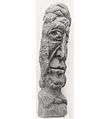 Juliusz Słowacki
Juliusz Słowacki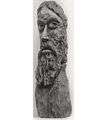 Cyprian Kamil Norwid
Cyprian Kamil Norwid Black Mushroom
Black Mushroom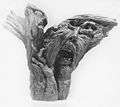 Black Mushroom
Black Mushroom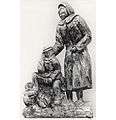 Our house
Our house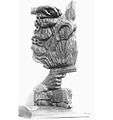 The Flame of Freedom
The Flame of Freedom
Cycle of works - Deformation
 Jan Graczyk - Deformation - Smile
Jan Graczyk - Deformation - Smile Jan Graczyk - Deformation - Denaturalization
Jan Graczyk - Deformation - Denaturalization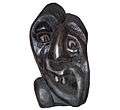 Jan Graczyk - Deformation
Jan Graczyk - Deformation Jan Graczyk - Deformation
Jan Graczyk - Deformation
Cycle of works - Polish Devils
 Jan Graczyk - Devil Rokita
Jan Graczyk - Devil Rokita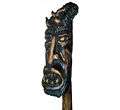 Jan Graczyk - Devil Boruta
Jan Graczyk - Devil Boruta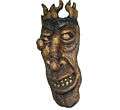 Jan Graczyk - Devil
Jan Graczyk - Devil Jan Graczyk - Devil
Jan Graczyk - Devil
Individual exhibitions
- 1972 – Gdynia, International marine club
- 1972 – Warsaw, Polish - Indy Club
- 1973 – Warsaw, Gallery TPSP Stara Kordegarda
- 1973 – Mińsk, National museum
- 1976 – Warsaw, Center of culture of Rose Luksemburg - Warsaw's BWA
- 1977 – Wilno, Exhibition palace
- 2005 - Łódź, Botanical garden
- 2006 - Warsaw, Ad Hoc Gallery
Group exhibitions
- 1976 – Kwidzyn, Dom Kultury,
- 1976 – Dresden, East Germany, Exhibition Salon,
- 1977 – Warsaw, Gallery TPSP Stara Kordegarda
- 2006 - Warsaw, Bemowo City-hall
- 2007 - Warsaw, National Library
Before the Forest Gallery was opened, Polish and foreign media presented Jan Graczyk's sculptures. The artist's works can be found in private and national art collections (e.g. Argentina, Belgium, Canada, Denmark, France, Holland, India, Italy, Mexico, Norway, Poland, Switzerland, the United Kingdom, or the United States of America)
Medals
- The Cross of the Home Army
- The Cross of the Warsovian Uprising
- The Cross of the Polish Scouting and Guiding Association
- The Golden Order of Honour
- Order of Developing the Cultural Heritage